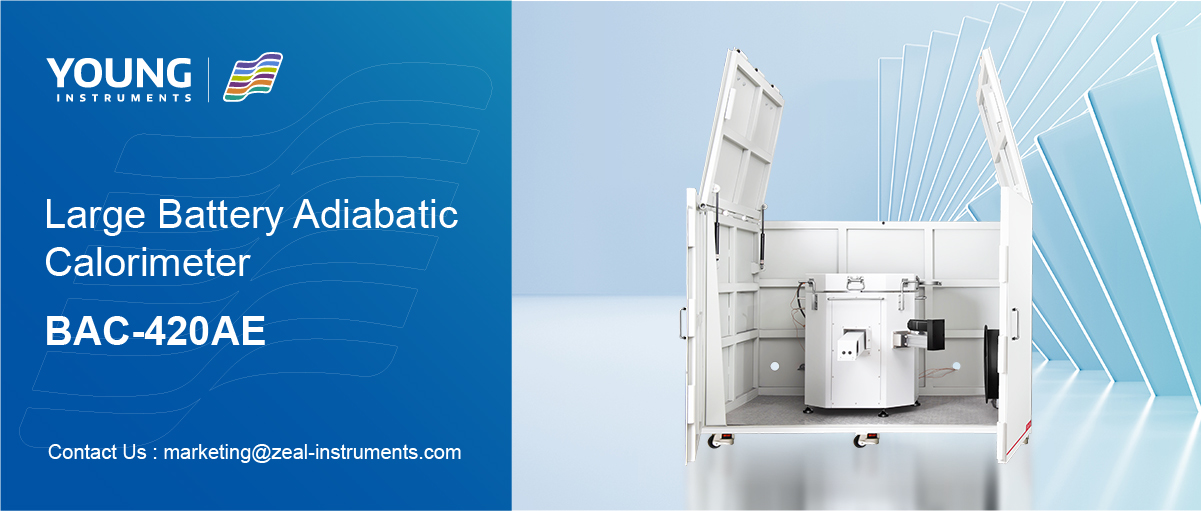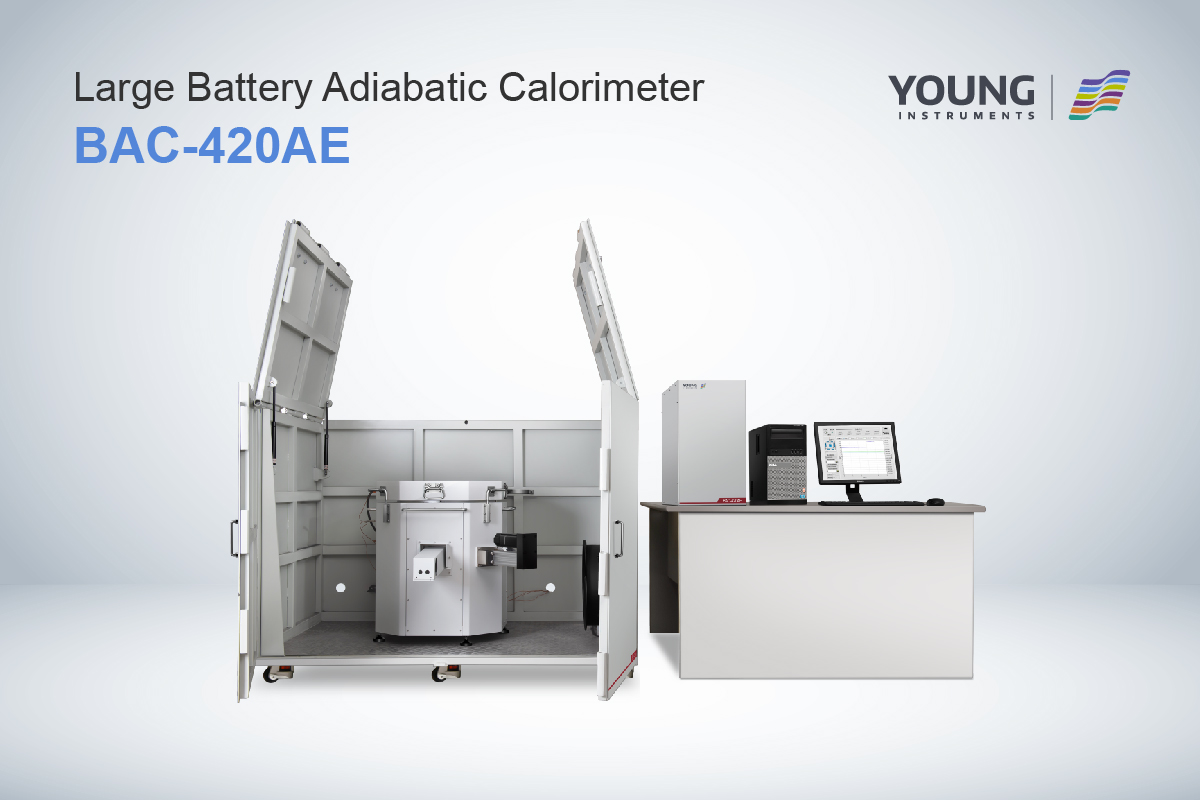Battery Calorimeter: Understanding Its Importance in Battery Testing
If you are interested in understanding the thermal behavior of batteries, then you might want to learn about battery calorimeters. A battery calorimeter is a device that measures the heat generated or absorbed by a battery during charging and discharging. By measuring the heat, researchers can better understand the thermal behavior of batteries, which is crucial for developing safer and more efficient energy storage systems.
Battery calorimeters are used to measure specific heat capacity, thermal conductivity, and thermal diffusivity of batteries. They can also be used to simulate different operating conditions, including temperature, humidity, and pressure. This information is critical for designing and optimizing batteries for various applications, including electric vehicles, grid storage, and portable electronics.
Overall, battery calorimeters are essential tools for battery research and development. They provide valuable insights into the thermal behavior of batteries, which is crucial for improving battery safety, performance, and efficiency. As the demand for advanced energy storage systems continues to grow, the importance of battery calorimeters is likely to increase as well.
Fundamentals of Battery Calorimetry
Thermodynamic Principles
Battery calorimetry is a technique used to measure the heat generated by a battery during charge and discharge cycles. This technique is based on the first law of thermodynamics, which states that energy cannot be created or destroyed, only converted from one form to another. In the case of a battery, energy is converted from chemical energy to electrical energy during discharge and from electrical energy to chemical energy during charge.
The heat generated during these processes is a result of the inefficiencies in the conversion process. This heat can be measured using a calorimeter, which is a device that is designed to measure the heat generated during a chemical reaction. In the case of a battery, the calorimeter is designed to measure the heat generated during a charge or discharge cycle.
Measurement Techniques
There are two main techniques used to measure the heat generated by a battery during charge and discharge cycles: adiabatic calorimetry and isothermal calorimetry.
Adiabatic calorimetry involves measuring the temperature rise of the battery during a charge or discharge cycle. This technique assumes that there is no heat exchange between the battery and its surroundings, which is not always the case. Isothermal calorimetry, on the other hand, involves measuring the heat generated by the battery while keeping the temperature constant. This technique is more accurate since it takes into account any heat exchange that may occur between the battery and its surroundings.
Battery calorimeters are designed to measure the heat generated by a battery during a charge or discharge cycle. These calorimeters are typically designed to be adiabatic or isothermal and can be used to measure the heat generated by a variety of battery chemistries. The data collected from these measurements can be used to improve the efficiency and safety of batteries.
Battery Calorimeter Design
A battery calorimeter is a device that measures the heat released or absorbed by a battery during charge and discharge cycles. The calorimeter design consists of two main components: hardware and software.
Hardware Components
The hardware of a battery calorimeter includes the following components:
-
Test Chamber: The test chamber is where the battery is placed for testing. It is designed to be thermally insulated to prevent heat loss to the environment.
-
Thermocouples: Thermocouples are temperature sensors that are used to measure the temperature of the battery during testing. They are placed at various locations in the test chamber to ensure accurate temperature readings.
-
Cooling and Heating System: The cooling and heating system is used to control the temperature of the test chamber. It is designed to maintain a constant temperature throughout the testing process.
-
Data Acquisition System: The data acquisition system is used to collect and record the temperature and heat data from the thermocouples. It is an essential component of the calorimeter design.
Software Integration
The software of a battery calorimeter is responsible for controlling the testing process and collecting data. It includes the following components:
-
Control Software: The control software is used to set up the testing parameters and control the cooling and heating system. It is also used to start and stop the testing process.
-
Data Analysis Software: The data analysis software is used to analyze the data collected during the testing process. It is used to calculate the heat generated or absorbed by the battery and to generate graphs and charts to visualize the data.
In summary, the design of a battery calorimeter involves both hardware and software components. The hardware components include the test chamber, thermocouples, cooling and heating system, and data acquisition system. The software components include the control software and data analysis software. Together, these components enable accurate measurement of the heat generated or absorbed by a battery during charge and discharge cycles.
Calorimetry in Battery Research
Calorimetry is a process of measuring heat transfer in a chemical reaction. In battery research, calorimetry is used to study the thermal behavior of batteries, especially during the charging and discharging cycles.
Electrochemical Energy Storage
Batteries are electrochemical energy storage devices that convert chemical energy into electrical energy. During the charging and discharging cycles, the batteries undergo various chemical reactions that produce heat. This heat can lead to thermal runaway, which can cause the batteries to catch fire or explode.
Calorimetry is used to study the heat generation rate, heat capacity, and thermal conductivity of batteries. This information is used to design batteries that can operate at optimal temperatures and prevent thermal runaway.
Thermal Management
Thermal management is an essential aspect of battery design and operation. Batteries that operate at high temperatures have a shorter lifespan and are more prone to thermal runaway. Therefore, it is crucial to design batteries that can dissipate heat efficiently and operate at optimal temperatures.
Calorimetry is used to study the thermal behavior of batteries and develop effective thermal management strategies. This includes designing heat sinks, optimizing the battery’s geometry, and using phase-change materials to absorb excess heat.
In conclusion, calorimetry is a crucial tool in battery research. It provides valuable insights into the thermal behavior of batteries and helps design batteries that can operate at optimal temperatures and prevent thermal runaway.
Experimental Procedures
Sample Preparation
Before conducting experiments with the battery calorimeter, it is important to prepare the sample properly. This involves ensuring that the battery is fully charged and ready for use. Additionally, the battery should be placed in a holder that is designed to fit the specific dimensions of the battery being tested. This will ensure that the battery is held securely in place during the experiment.
Data Collection
To collect data using the battery calorimeter, you will need to follow a specific procedure. First, the battery should be placed in the calorimeter and allowed to equilibrate to the desired temperature. Once the temperature has stabilized, the battery should be discharged at a specific rate while the calorimeter measures the heat generated by the battery.
During the experiment, it is important to collect data at regular intervals to ensure that accurate measurements are obtained. This data should include the temperature of the battery, the voltage, and the current. Additionally, it may be necessary to collect data on the heat generated by the battery at different discharge rates to determine the optimal operating conditions for the battery.
Overall, the experimental procedures for using a battery calorimeter are relatively straightforward. However, it is important to follow the correct procedures to ensure that accurate data is collected. By following the procedures outlined above, you can ensure that your experiments are conducted properly and that you obtain reliable data on the performance of your batteries.
Data Analysis and Interpretation
Once you have collected data using the battery calorimeter, the next step is to analyze and interpret the results. This process involves understanding the data collected and drawing meaningful conclusions from it. Here are some key steps to follow when analyzing and interpreting data from a battery calorimeter:
1. Data Cleaning and Preparation
Before analyzing the data, you need to clean and prepare it. This process involves checking for errors, missing values, and outliers. You may also need to convert the data into a more manageable format, such as a spreadsheet.
2. Statistical Analysis
Once you have cleaned and prepared the data, you can perform statistical analysis to identify patterns and trends. This analysis can involve calculating means, medians, standard deviations, and other statistical measures. You can also create charts and graphs to visualize the data.
3. Interpretation
After analyzing the data, you need to interpret the results. This process involves drawing conclusions from the data and making recommendations based on those conclusions. For example, if the data shows that a battery is generating excessive heat, you may recommend changes to the battery design to reduce the risk of thermal runaway.
4. Reporting
Finally, you need to report your findings. This process involves communicating the results of your analysis and interpretation to others. You may need to create a report or presentation that summarizes your findings and includes recommendations for action.
Overall, the process of analyzing and interpreting data from a battery calorimeter can be complex, but it is essential for ensuring the safety and reliability of battery systems. By following these key steps, you can draw meaningful conclusions from your data and make informed recommendations for action.




































